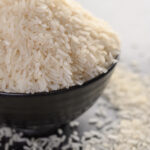South Korean cuisine has gained immense popularity worldwide in recent years, thanks to its vibrant flavors, unique culinary techniques, and rich cultural heritage. From fiery-spicy dishes to subtle and delicate flavors, South Korea offers a diverse range of culinary delights. In this article, we will explore the top 10 most eaten foods in South Korea, providing an insight into the country’s gastronomic treasures.
- Kimchi: No discussion of South Korean cuisine would be complete without mentioning kimchi. This traditional side dish made from fermented vegetables, such as cabbage, radishes, and cucumbers, is a staple in Korean households. Kimchi is known for its tangy, spicy, and umami flavors, and it is often enjoyed alongside rice and other dishes.
- Bibimbap: Bibimbap, meaning “mixed rice,” is a beloved Korean dish that combines steamed rice with an assortment of sautéed and seasoned vegetables, often including carrots, spinach, bean sprouts, and mushrooms. It is typically topped with a fried egg and gochujang (spicy red pepper paste) for an extra kick of flavor.
- Bulgogi: Bulgogi, meaning “fire meat,” is a popular Korean barbecue dish made from thinly sliced marinated beef or pork. The meat is seasoned with a combination of soy sauce, garlic, sesame oil, and sugar, then grilled to perfection. Bulgogi is known for its savory and slightly sweet taste, and it is often enjoyed with lettuce wraps and other condiments.
- Samgyeopsal: Samgyeopsal refers to thick slices of pork belly, which are grilled at the table. This popular Korean barbecue dish is similar to bacon and offers a perfect balance of tender meat and crispy fat. Samgyeopsal is typically enjoyed with lettuce wraps, garlic, ssamjang (spicy dipping sauce), and a variety of side dishes.
- Japchae: Japchae is a stir-fried noodle dish made from sweet potato glass noodles, vegetables, and sometimes meat. The noodles are lightly seasoned with soy sauce and sesame oil, resulting in a flavorful and satisfying dish. Japchae is often served as a side dish or as a main course during special occasions.
- Tteokbokki: Tteokbokki, a popular street food in South Korea, features chewy rice cakes cooked in a spicy gochujang-based sauce. It is often accompanied by fish cakes, boiled eggs, and cabbage. The combination of heat from the sauce and the addictive texture of the rice cakes makes tteokbokki a favorite among locals.
- Kimbap: Kimbap, similar to sushi, is a popular grab-and-go food in South Korea. It consists of steamed rice, vegetables, and sometimes meat or seafood, rolled in seaweed and sliced into bite-sized pieces. Kimbap comes in various fillings and is a convenient and delicious option for a quick meal or picnic.
- Haemul Pajeon: Haemul Pajeon is a savory pancake made with a batter of flour, eggs, and green onions, along with an assortment of seafood, such as shrimp, squid, and clams. This crispy and flavorful pancake is often enjoyed with a soy-based dipping sauce and is a popular choice for rainy days or as a snack with friends.
- Sundubu Jjigae: Sundubu Jjigae is a spicy soft tofu stew that is both comforting and flavorful. It is made with silky soft tofu, vegetables, seafood, or meat, and a spicy broth made from gochujang and anchovy stock. Sundubu Jjigae is often served bubbling hot in individual stone pots and is accompanied by a bowl of steamed rice.
- Bingsu: Bingsu is a refreshing and popular dessert in South Korea, especially during the hot summer months. It consists of shaved ice topped with a variety of sweet toppings such as sweetened red beans, fruits, condensed milk, and flavored syrups. Bingsu comes in numerous flavors and variations, offering a delightful treat for those with a sweet tooth.
South Korean cuisine boasts a wide range of flavorful and diverse dishes that have captivated palates around the globe. From the ubiquitous kimchi and bibimbap to the sizzling barbecued meats and comforting stews, the top 10 most eaten foods in South Korea exemplify the country’s culinary prowess. These dishes not only reflect the unique flavors and ingredients of the region but also embody the spirit of community and shared enjoyment that lies at the heart of Korean dining culture.








